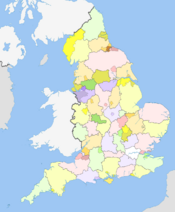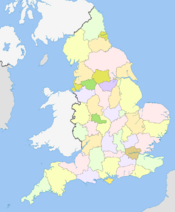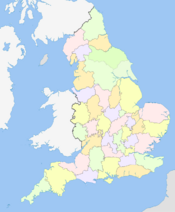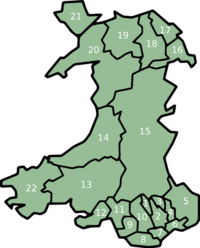Counties of the United Kingdom facts for kids
The counties of the United Kingdom are like different areas or regions that help organize the country. Think of them as different pieces of a big puzzle! They are used for things like local government, geography, and even politics.
Long ago, a similar word was shire. By the Middle Ages, counties became a key way to manage local areas, especially in England. By the early 1600s, all of England, Wales, Scotland, and Ireland were divided into these counties. In Scotland, the word shire was used until after 1707, when Scotland and England officially joined to form Great Britain.
Since the 1800s, counties have changed to fit new needs for how places are run. The word county can mean different things depending on how it's used. In some parts of England and Wales, counties still handle many local government tasks. In other big cities, they've been replaced by "unitary authorities." These are single councils that manage everything in their area.
Today, besides the areas used for local government, every part of the United Kingdom is also part of a historic county. These historic counties have been important geographic and cultural areas since the Middle Ages.
Counties in England
England is divided into 48 areas called ceremonial counties. You might also hear them called geographic counties. Many of these counties have their roots in the 39 historic counties that are very old. However, some were created more recently, like in 1974.
England also has 84 areas called metropolitan and non-metropolitan counties. These are used for local government, which means they help run services like schools and roads. These areas can be a single district or be split into several smaller districts. As of April 2023, 28 of these counties are divided into districts, and 21 of them have a county council (a group of people who make decisions for the county).
Most ceremonial counties are similar to a metropolitan or non-metropolitan county with the same name, but their exact borders might be a bit smaller. The way counties are set up now has changed over time. From 1974 to 1996, the metropolitan and non-metropolitan counties were exactly the same as the ceremonial counties. Before that, from 1889 to 1974, areas with county councils were called administrative counties. Big towns and cities had their own separate councils, called county boroughs.
Counties in Scotland
In Scotland, there were 33 areas called local government counties. These were created in 1889. However, they were officially removed in 1975. Instead, Scotland was divided into larger regions and districts and special islands council areas.
Then, in 1996, these regions and districts were also removed. Scotland is now divided into Scottish council areas, which are single councils that manage everything in their area. The islands areas, like Orkney and Shetland, kept their original borders.
The 1889 law created county councils. It also made sure that each civil county was one continuous area, fixing any places where parish borders crossed county lines. Two counties, Ross and Cromarty, were even joined together to form Ross and Cromarty.
Some of the regions and districts created in 1975, and many of the council areas created in 1996, have areas that are quite similar to the older counties. Two of the three islands areas—Orkney and Shetland—have borders that are exactly the same as their old county borders.
Scotland also has registration counties, which are still used today for things like keeping records. Areas in Scotland where a Lord-Lieutenant is appointed are called lieutenancy areas. A Lord-Lieutenant is the King's representative in that area.
Counties in Wales
The thirteen historic counties of Wales were officially set up in 1535. However, some counties, like Pembrokeshire, existed even earlier, from 1138. The Administrative Counties of Wales, created in 1889, were based on these historic ones.
In 1974, a completely new system was introduced with very different areas. These were changed again in 1996. Since then, Wales has been fully divided into a system of unitary authorities. These are also known as principal areas.
Out of the 22 unitary authorities, eleven are legally called "counties," and eleven are called county boroughs. But, in everyday talk, people often just refer to all of them as "counties." The areas in Wales that have a Lord-Lieutenant are called the preserved counties of Wales. These are mostly combinations of the principal areas, chosen to be similar to the counties that existed in 1974.
Counties in Northern Ireland
There are six counties in Northern Ireland. If you list them by how big they are, from largest to smallest, they are: Tyrone, Antrim, Down, Londonderry, Fermanagh and Armagh.
These six historic counties of Northern Ireland are no longer used for day-to-day government tasks. However, along with the cities of Belfast and Derry, these counties are still used for organizing things within the government, and often by private businesses and sports clubs.
All the counties of Northern Ireland are part of the historic province of Ulster. This larger province also includes three other counties that are now in the Republic of Ireland: Donegal, Cavan and Monaghan.








